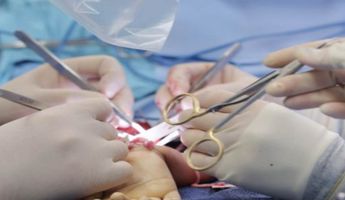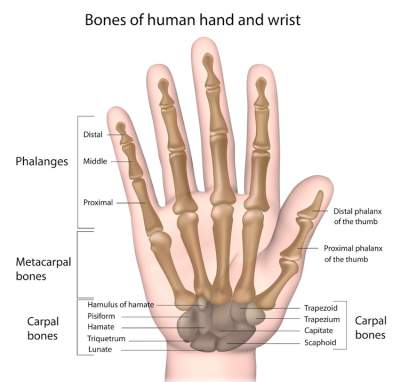Hand Surgery in Warsaw
Search and Compare the Best Clinics and Doctors at the Lowest Prices for Hand Surgery in Warsaw

Find the best clinics for Hand Surgery in Warsaw
With Medijump you can browse 1 facilities offering Hand Surgery procedures in Warsaw. The cheapest price available is $7,626 in Jelenia Gora. And for the cheapest price globally, prices start from $964 in Tunisia.
Hand Surgery in Poland
Price: $ 7,626
Hand Surgery in Jelenia Gora
Price: $ 7,626
Tunisia offers the best prices Worldwide
Price: $ 964
Model Med, located in Pulawska, Warsaw, Poland offers patients Hand Surgery procedures among its total of 8 available procedures, across 2 different specialties. Currently, there's no pricing information for Hand Surgery procedures at Model Med, as all prices are available on request only, whilst the national average price is approximately $7,626. There are many specialists available at the Hospital, with 4 in total, and they are not accredited by any recognized accreditations institutes
WHY US?
At Medijump, we're making medical easy. You can search, compare, discuss, and book your medical all in one place. We open the door to the best medical providers worldwide, saving you time and energy along the way, and it's all for FREE, no hidden fees, and no price markups guaranteed. So what are you waiting for?

Free

Best Price

Widest Selection

Risk-Free
What you need to know about Hand Surgery in Warsaw
What Does the Procedure Involve?
There are several different types of surgery that can be carried out on the hand, depending on the cause of the problem, such as injury, disease, or congenital defect. Some of the main types of hand surgery are tendon repair, nerve repairs, closed reduction and fixation, joint replacement (arthroplasty), as well as surgical drainage and/or debridement. Most of these surgeries are performed under general anesthetic, but some can be done under local anesthetic.
How Long Should I Stay in Warsaw for a Hand Surgery Procedure?
Depending on which type of surgery you underwent, you may need to stay in the hospital overnight. The recommended length of stay is 7 to 10 days at Warsaw, but you should check with your surgeon when you can fly home. During your stay, your surgeon may schedule follow-up checkups where your condition is monitored and your stitches are removed.
What's the Recovery Time for Hand Surgery Procedures in Warsaw?
In general, you should be able to return to work within a week if your job does not require extensive use of your hands, but if your job is physically demanding and you need to use your hands a lot, it can take as long as 3 to 6 months before you can resume your job. The total recovery period may take around 6 months, but this depends on which type of surgery you underwent.
What sort of Aftercare is Required for Hand Surgery Procedures in Warsaw?
After the surgery, you may need to attend a physical therapy program to strengthen your hand and bring back your range of motion using isometric exercises. Remember to begin your normal routine gradually and take it easy on your affected hand to prevent any complications. You may need to schedule an appointment with your local doctor to check your healing progress.
What's the Success Rate of Hand Surgery Procedures in Warsaw?
Hand surgery is effective and highly successful. However, just like most surgeries, it carries the risk of bleeding and infection. Other side effects and risks include incomplete healing, blood clots, and loss of feeling or movement of the fingers or hand.
Are there Alternatives to Hand Surgery Procedures in Warsaw?
Surgery is only an option if other forms of treatment are unsuccessful. If you do not want to undergo surgery, you can take non-steroidal anti-inflammatory medications or cortisone injections and attend physical therapy.
What Should You Expect Before and After the Procedure
Before surgery, your range of motion, mobility, and productivity may be limited. After hand surgery, you should be able to do normal things again and to perform your activities efficiently.
Whilst the information presented here has been accurately sourced and verified by a medical professional for its accuracy, it is still advised to consult with your doctor before pursuing a medical treatment at one of the listed medical providers
No Time?
Tell us what you're looking for and we'll reachout to the top clinics all at once
Enquire Now

Popular Procedures in Warsaw
Prices Start From $553

Prices Start From $218

Prices Start From $218

Prices Start From $2,050

Recommended Medical Centers in Warsaw for Hand Surgery

- Interpreter services
- Translation service
- Religious facilities
- Medical records transfer
- Medical travel insurance
- Health insurance coordination
- TV in the room
- Safe in the room
- Phone in the room
- Private rooms for patients available

- Interpreter services
- Translation service
- Religious facilities
- Medical records transfer
- Medical travel insurance
- Health insurance coordination
- TV in the room
- Safe in the room
- Phone in the room
- Private rooms for patients available

- Interpreter services
- Translation service
- Religious facilities
- Medical records transfer
- Medical travel insurance
- Health insurance coordination
- TV in the room
- Safe in the room
- Phone in the room
- Private rooms for patients available

- Interpreter services
- Translation service
- Religious facilities
- Medical records transfer
- Medical travel insurance
- Health insurance coordination
- TV in the room
- Safe in the room
- Phone in the room
- Private rooms for patients available

- Interpreter services
- Translation service
- Religious facilities
- Medical records transfer
- Medical travel insurance
- Health insurance coordination
- TV in the room
- Safe in the room
- Phone in the room
- Private rooms for patients available

- Interpreter services
- Translation service
- Religious facilities
- Medical records transfer
- Medical travel insurance
- Health insurance coordination
- TV in the room
- Safe in the room
- Phone in the room
- Private rooms for patients available
Hand Surgery in and around Warsaw
About Warsaw
As the capital and largest city of Poland, Warsaw continues to charm its visitors with diverse architecture, cultural treasures, stunning outdoor spaces, and superb dining spots. With Poland’s recent emerging popularity in medical tourism, the city has seen an influx of foreign patients coming for its world-class healthcare. The city’s very high standard of living and universal healthcare system are seen as an attractive choice for international medical tourists, particularly those from the surrounding countries. Both the public and private medical centers in this city are equipped with the latest medical technology and are offering a wide range of medical procedures at significantly lower prices than other countries in Europe. The most sought-after procedures in the city are cosmetic surgery, orthopedic, bariatric, and dental treatments.
Popular Parts of Warsaw
Warsaw offers a beautiful blend of old and new. Visitors are welcomed with restored Gothic buildings and modern glass structures standing side by side. One of the most popular attractions is the Palace of Culture & Science, which is a ‘gift of friendship’ from the Soviet Union and is the second tallest building in Poland. As a vast recreation and educational facility, this building is filled with theatres, cinemas, and museums. Most people also come to wander around the streets of the city’s Old Town, the oldest part of the city, to see medieval architecture and visit the Old Town Market Place. Warsaw is also known as the former home of Frédéric François Chopin and visitors are welcome to retrace his steps by strolling around Saxon Garden.
Transport in Warsaw
The main airport is Warsaw Frederic Chopin Airport and it is the largest and busiest airport in Poland that connects with many cities around the world. To get around Warsaw, local buses are available and they’re reasonably priced. Taxis are the most convenient way to get around and are relatively cheap. However, ensure to avoid unlicensed taxi drivers as they will charge more. The safest way to get a taxi is by asking your hotel staff for the number of the taxi company they use. Cycling is also a good way to explore the city.
Visas in Warsaw
Since Poland is a part of the Schengen area, citizens of several countries, including the US, Canada, Australia, and Japan, can stay in Warsaw without a visa for up to 90 days. EU citizens do not need a visa and are allowed to stay indefinitely. Citizens of other countries are required to obtain a visa in advance. A passport valid for at least 6 months is required.
Weather in Warsaw
Summer (June – August) has unpredictable weather with warm temperatures, sometimes reaching 30°C. Autumn (September – November) brings cooler temperatures and more pleasant weather. Winter (December – early March) can be freezing, with the temperatures dropping to -20°C on the coldest days. Spring (late March-May) is characterized by warmer temperatures and less rain.
Additional Info
- Local Currency: Polish Zloty (PLN) is the official currency and 1 USD converts to approx. 3.8 PLN.
- Money & Payments: ATMs are widely available in Warsaw. Credit cards can be used in most restaurants and hotels. Tipping is optional.
- Local Language: Polish is the official language. Most people in tourist areas can speak decent English.
- Local Culture and Religion: Warsaw is a multi-cultural city. Christianity is the largest religion, but other religions are also present in the city.
- Public Holidays: Warsaw celebrates major Christian holidays, such as Christmas Day and Easter. There are also some national holidays celebrated in the city, including Constitution Day and Independence Day.
Popular Searches
- Plastic Surgery in Thailand
- Dental Implants in Thailand
- Hair Transplant in Thailand
- Breast Augmentation Thailand
- Gastric Sleeve in Thailand
- Gender Reassignment Surgery in Thailand
- Laser Hair Removal in Bangkok
- Botox in Bangkok
- Dermatology in Bangkok
- Breast Augmentation in Bangkok
- Coolsculpting in Bangkok
- Veneers in Turkey
- Hair Transplant in Turkey
- Rhinoplasty in Turkey
- Stem Cell Therapy in Mexico
- Rhinoplasty in Mexico
- Liposuction in Mexico
- Coolsculpting in Tijuana
- Rhinoplasty in Korea
- Scar Removal in Korea
- Gastric Sleeve in Turkey
- Bone Marrow Transplant in India
- Invisalign in Malaysia
- Plastic Surgery in the Dominican Republic
- Tummy Tuck in the Dominican Republic
- Plastic and Cosmetic Surgery in Poland
- Rhinoplasty in Poland
- Hair Implant in Poland
- Dental Implants in Poland
- IVF in Turkey

